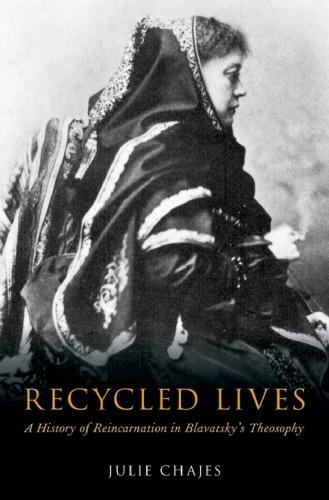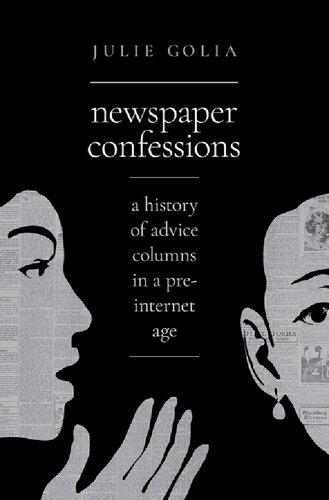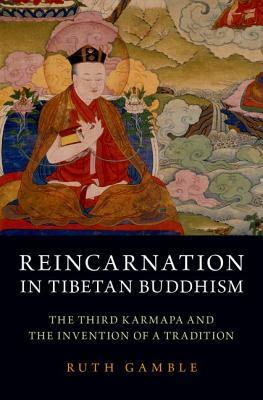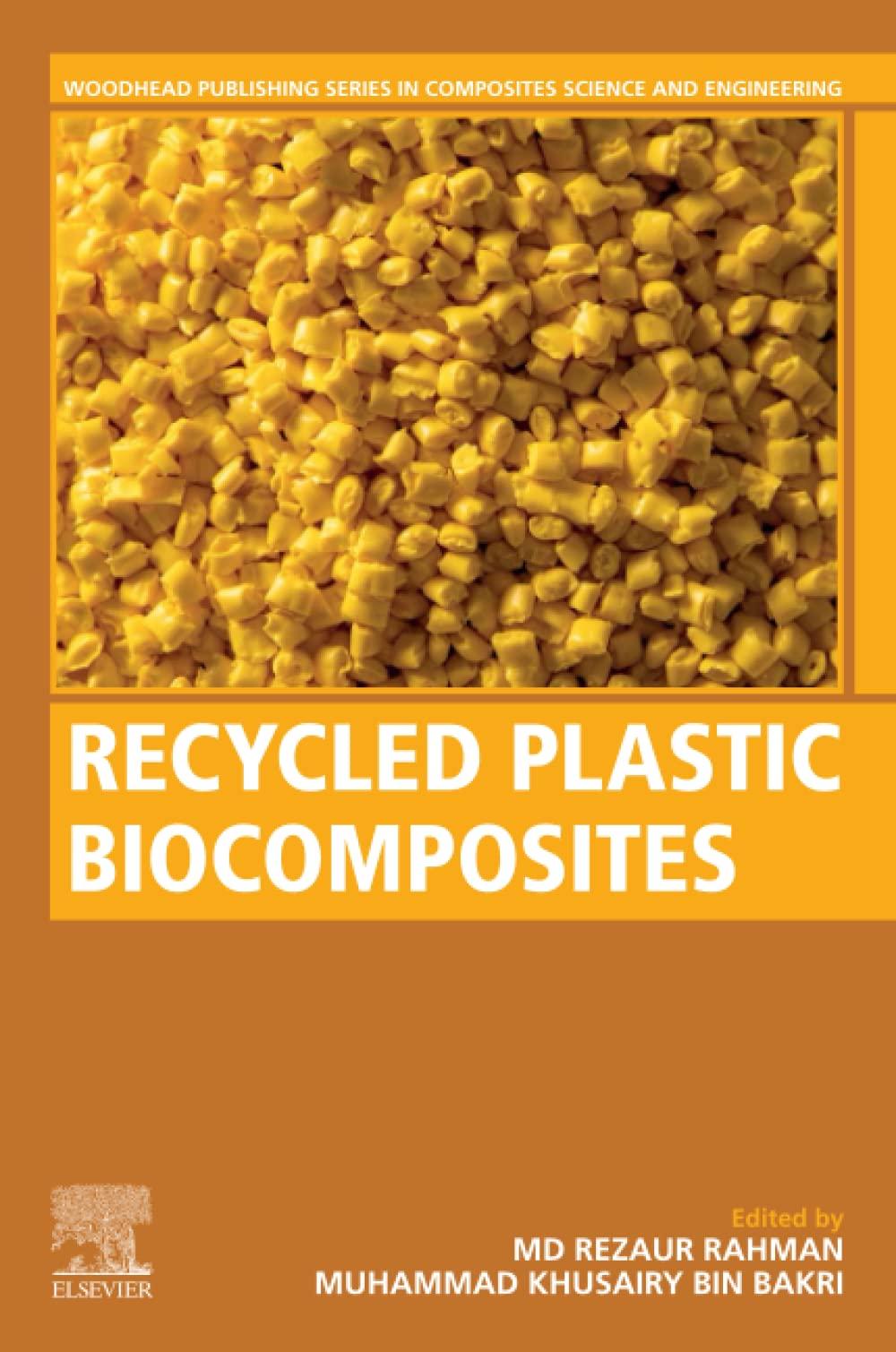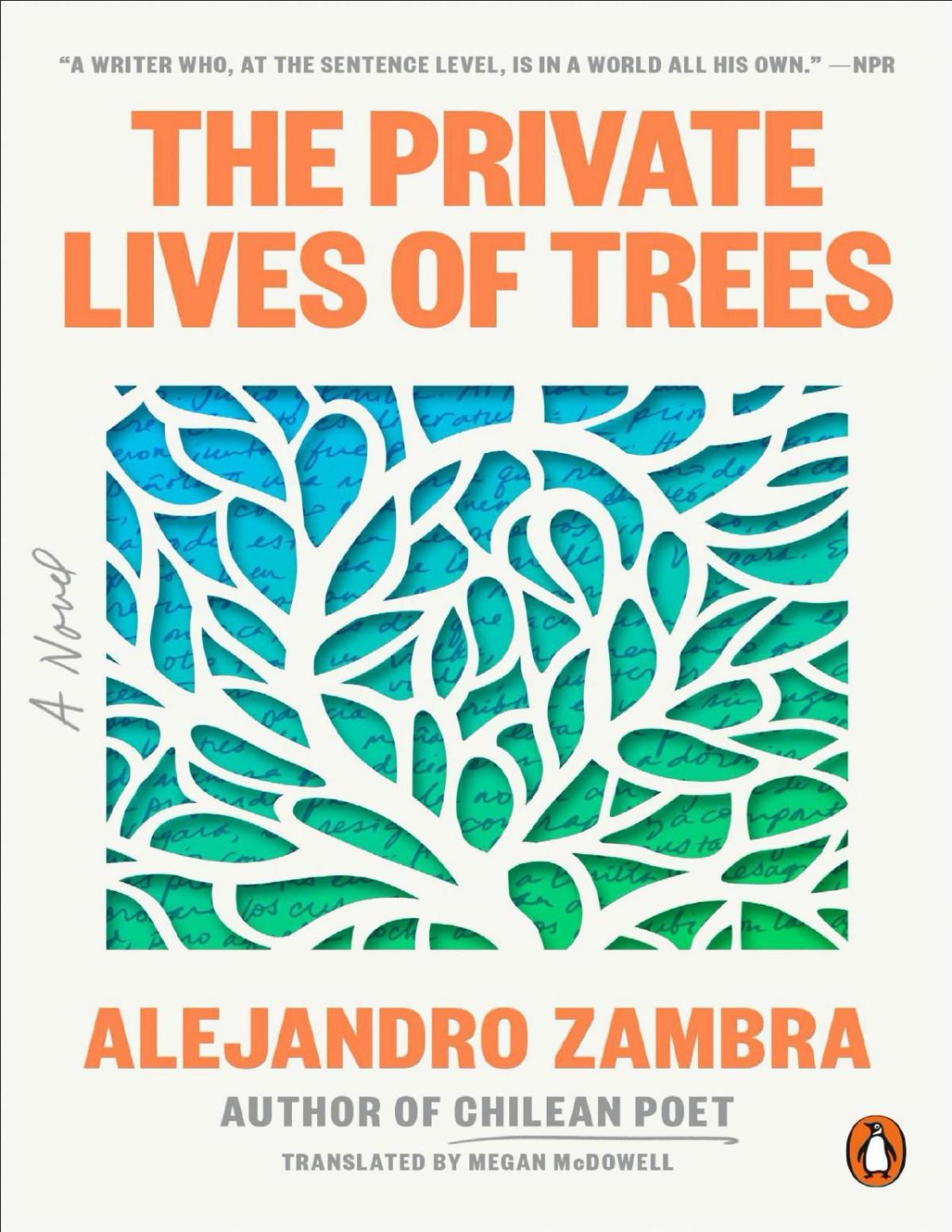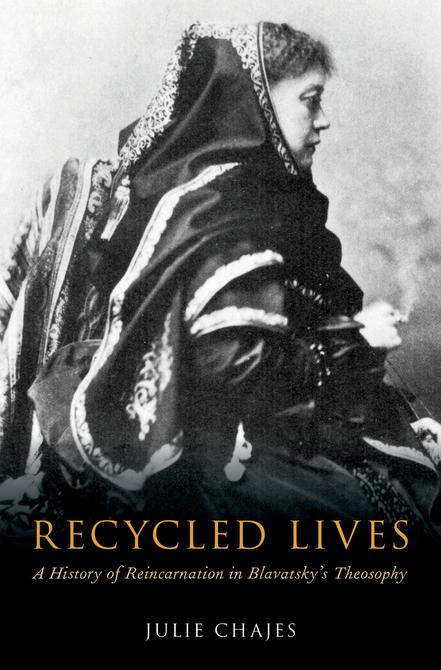ACKNOWLEDGEMENTS
In the brief years between the submission of my doctorate and the completion of the book manuscript, what seems an unusually large number of friends and relatives have died. From the seemingly blessed naiveté of youth, I was initiated into a truer appreciation of impermanence, and at an age that was probably younger than average. Meanwhile, I was writing about how people thought about death. I developed empathy for my subjects. They were no strangers to sorrow, and Helena Blavatsky—whose rebirth doctrines are the subject of this book—was no exception. Her mother died when she was only ten, one of her brothers already having died in infancy. Perhaps Blavatsky found solace in an occult doctrine that taught that nothing was insignificant, not the life or death of even the smallest creature. Within the ever-progressing cosmic ‘hall of mirrors’ she described, the life of every being was an integral part of a process that would find its culmination in God’s selfknowledge. Thus ever-connected, all humans, animals, plants, and even minerals were the children of the universe and an intrinsic component of its evolving fabric. Against contemporary Spiritualists, Blavatsky argued we would not meet our loved ones in the form in which we had known them. Nevertheless, they were bound to us forever.
I too have been linked to others in meaningful ways through the production of this book. I am blessed with a wonderful community of friends who are like a large adopted family, and whose members have each, consciously or unconsciously, contributed to my well-being and productivity during the peregrinations that led to this book. Marc Epstein and Ági Veto supported me at the beginning of what was to be a long and difficult journey. Orly and Josh Lauffer hosted me and my family in their beautiful home for several significant life events. David and Sarah Benjamin, among many other remarkable acts of kindness, let me finish the doctoral thesis on which this book was based in their house when I desperately needed a quiet writing space. Elisheva and Barrie Rapoport have kept me sane, each in their own unique way, and Sara and Eliahu Shiffmann are the dearest of friends and substitute grandparents to my son. Many other friends have offered their support, and I can only apologise that there is not enough space to mention any more, other than the four girlfriends with whom I have been especially close in recent years: Lee Hod, Jelena Shapir, Rosella De Jong, and Shifra Goldberg.
Moving on to those who have had the most direct impact on the present volume, the Blavatsky Trust provided me with the grant that enabled me to finish the manuscript. Without them, this book would probably not exist. I thank all the trustees, but particularly the president, Colin Price. Clare Goodrick-Clarke, widow of my PhD adviser, Professor Nicholas Goodrick-Clarke, played an indispensable role in getting me the grant. Clare believed that a good way to continue Nicholas’s legacy was through his students. I hope I would have made him proud and it is my belief that a part of him lives on in this book. My debt to him (whose suggestion it was that I even work on Blavatsky in the first place) is the greatest.
Having lost my PhD adviser just months after I was awarded my doctorate, it fell to others to offer a helping hand to a young scholar. Extra special thanks go to Professor Karl Baier for his continuing support and generosity of spirit. I owe too a debt of gratitude to Professor Boaz Huss, my postdoctoral supervisor at Ben-Gurion University of the Negev; Professor Yossi ben Artzi, who gave me my first postdoctoral fellowship, at the University of Haifa; and Professor Yossi Schwartz, who hosted me at Tel Aviv University. Thanks to Professor Christian
Wiese and the team at the Forschungskolleg in Bad Homburg, I spent a blissful month in academic paradise. Professor Steven Weitzman, Dr. Natalie Dohrman, and all the staff at the Herbert D. Katz Center for Advanced Judaic Studies at the University of Pennsylvania made my stay in Philadelphia a particularly enjoyable and fruitful one. Finally, my thanks to the donors who keep the Katz Center afloat (especially Eloise Wood, who funded my fellowship) and to Professor David Ruderman, the former director, who has the rare and wonderful talent of encouraging me to be at the top of my game.
If there is a place in heaven reserved for teachers and mentors, there is a special corner of it reserved for people like Professors Jim Moore and Joy Dixon, both of whom offered me their expert feedback without ever having met me, after I had the bare-faced cheek of contacting them by email. In this age of overburden, I consider these acts of extraordinary generosity. My thanks too to Projit Mukhariji, Mriganka Mukhopadhyay, Vadim Putzu, Erin Prophet, Jake Poller, Joseph Tyson, and James Santucci for reading and commenting on material that is included in this book, as well as to Cathy Gutierrez, Christine Ferguson, Jean-Pierre Brach, Olav Hammer, Maria Carlson, Aren Roukema, and Jimmy Elwing for their various kindnesses. Erica Georgiades and Massimo Introvigne were generous with their help when it came to the tricky question of what to put on the cover. John Patrick Deveney, Marc Demarest, John Buescher, Robert Gilbert, and Leslie Price are, all five of them, living, breathing libraries of Theosophical, Spiritualist, and occultist history. They have helped me locate sources and read and commented on my work. Marc, Pat, and John have also amused me with their irreverent banter and ironic take on the period we study, a contribution I value tremendously. Marc Demarest and colleagues’ database of Spiritualist, occultist, and Theosophical periodicals, iapsop. com, is a phenomenal achievement that will serve many future generations of scholars. It has opened up research vistas I could not have dreamt of when I began my doctorate.
Thanks go to my parents, Anthony Hall and Rejane Gomes de Mattos Hall; my grandparents, Edith and Murilo Gomes de Mattos and Giuliana and Leslie Hall; as well as my brother Joseph. My husband, Yossi Chajes, has supported me in many ways over what is now the best part of a decade, and has provided much inspiration. His
children from his first marriage, Ktoret, Levana, Yoel, and Nehora, are the best siblings my son Yishai could have hoped for. Yishai has contributed to the production of this book by forcing me to keep to a strict schedule. He has also revealed to me a type of love I was unaware of before he came into the world, and taught me the unique joy of being bathed in a child’s laughter, the perfect antidote to the types of malaise that sometimes arise from spending long hours at a desk.
Finally, I thank Helena Blavatsky herself, without whom this book could never have been written. Independent, intelligent, and unconventional, Blavatsky was certainly a very interesting person, if, at times, also a difficult one. These are precisely the qualities I would usually enjoy in a friend.
Introduction
An informal survey of your friends and relatives may reveal that many of them believe in reincarnation and karma in some form, or at least do not dismiss them out of hand. Research shows this to be the case for a sizeable minority (around 20 per cent) of people in the Western world who have no particular connection with Eastern religions.1 In Asian countries, reincarnation as an animal may be considered an undesirable possibility, but in Europe and America, reincarnation is usually thought of as a return to life in a human body for the purpose of spiritual advancement or self-improvement.2 After two millennia of the virtual absence of any such doctrine in the Christian world, how has this particular belief suddenly become so unremarkable?
This study explores the seminal contribution of one woman: the notorious Russian occultist and ‘great-grandmother’ of the New Age
1 Perry Schmidt-Leukel, Transformation by Integration: How Inter-Faith Encounter Changes Christianity (London: SCM Press, 2009), 68. The ‘West’ is a problematic category that I use here only for the sake of convenience. For a summary of problems relating to its use, see Kennet Granholm, ‘Locating the West: Problematizing the Western in Western Esotericism and Occultism’, in Occultism in a Global Perspective, ed. Henrik Bogdan and Gordan Djurdjevic (Durham: Acumen, 2013).
2 Tony Walter and Helen Waterhouse, ‘Lives-Long Learning: The Effects of Reincarnation Belief on Everyday Life in England’, Nova Religio 5, no. 1 (October 2001). For a recent exploration of reincarnation belief, see Lee Irwin, Reincarnation in America: An Esoteric History (Lantam, MD, and London: Lexington Books, 2017). For a shorter treatment, see Lee Irwin, ‘Reincarnation in America: A Brief Historical Overview’, Religions 8, no. 10 (October 2017).
Movement, Helena Petrovna Blavatsky (1831–1891). Blavatsky was one of the leading figures of the nineteenth-century ‘occult revival’, a period during which there was a relative surge in popular interest in all things esoteric, mystical, and magical.3 Occultism found distinctive expressions in Britain, mainland Europe, and America, where it interconnected with currents such as Spiritualism, Mesmerism, and Freemasonry, all of which reached a peak more or less around the middle decades of the century. Blavatsky was the matriarch and primary theorist of the most influential occultist organisation of the latenineteenth and early-twentieth centuries, the Theosophical Society, founded in New York in 1875. In addition to fourteen volumes of collected writings and several other books, Blavatsky was the author of two Theosophical treatises: Isis Unveiled (1877) and The Secret Doctrine (1888). These works had a lasting impact on the occult revival, related twentieth-century developments, and ultimately on the development of the New Age Movement, that loosely organised and diffuse spiritual and political movement that arose from the counterculture of the 1960s and 1970s, initially in America.4 The New Age was one of the most far-reaching cultural and religious developments of the late twentieth century, and Blavatsky’s ideas are fundamental to understanding its emergence, as well as the emergence of modern and postmodern forms of religion more generally.
Blavatsky instructed her followers in what she claimed was an ancient wisdom tradition, the true, esoteric teachings underlying all religion, philosophy, and science. Sages throughout history had supposedly taught the principles of this doctrine, which had been brought
3 The term ‘revival’ is problematic, as it implies the reappearance of an occult that existed previously. I use the term here without this implication.
4 On the connection between reincarnation belief in present-day America, New Age, and Theosophy, see Courtney Bender, ‘American Reincarnations: What the Many Lives of Past Lives Tell Us about Contemporary Spiritual Practice’, Journal of the American Academy of Religion 75, no. 3 (September 2007). On the New Age Movement in general, see Paul Heelas’s pioneering study, The New Age Movement: The Celebration of the Self and the Sacralization of Modernity (Oxford: Blackwell, 1996). On the definition of New Age, see George D. Chrysiddes, ‘Defining the New Age’, in Handbook of the New Age, ed. Daren Kemp and James R. Lewis (Leiden: Brill, 2007). See also James R. Lewis, ‘Science and the New Age’, in Handbook of the New Age
from the continent of Atlantis before its submersion. Its tenets had been handed down from master to pupil, with initiates taking responsibility for transmitting them from one generation to the next. Blavatsky claimed aspects of the ancient wisdom were still discernible within the world’s religions and mythologies, but only when interpreted correctly. This was because throughout the centuries, they had been corrupted through misunderstanding and deliberate falsification. Reincarnation had been part of the secret tradition, and the ancient Greeks, Egyptians, Jews, Hindus, and Buddhists had all taught it.
According to Blavatsky, humans have an immortal soul whose origin lies in an impersonal divine absolute, which she simultaneously identified with the highest neo-Platonic hypostasis (the One), the Hindu parabrahman, and the Buddhist Adi Buddha. This divine absolute was said to emanate all creation from itself in a series of levels. Straightforwardly put, emanation is a concept reminiscent of a champagne fountain in which the champagne cascades from the bottle into the glass at the top and thereafter into the glasses beneath. In the religious or philosophical theory, the metaphorical champagne bottle never empties; the Divine continually emanates without diminution into the various levels of the cosmos it produces. Prominent in neoPlatonic, Hermetic, Gnostic, and Kabbalistic thought, many different variants of this basic idea have been proposed throughout the centuries.
In Blavatsky’s version, the human spirit originated in one of the emanated levels of creation, the Universal Soul, from which they were emitted and sent on a journey into matter, reincarnating many times in different bodies and on different planets. They continually evolved, until they eventually became fully ‘spiritualised’, reuniting with the divine source from which they had come. Each time the spirit incarnated, it was ‘dressed’ in various garments that allowed it to function. These vestments were said to account for the physical, emotional, intellectual, and spiritual attributes experienced during a particular lifetime. Through accumulating the experiences of more and more lives, human evolution would be inevitable, although it could be faster or slower depending on individual will and effort.
This was the reincarnation doctrine Blavatsky taught from around 1882 onwards. It is fairly well known. However, the presence in her first major work, Isis Unveiled, of statements that seem to deny reincarnation
have confused Blavatsky’s readers from her lifetime to the present day. As this study will demonstrate, this is because Blavatsky actually taught two distinct theories of rebirth. In The Secret Doctrine, she taught reincarnation, but in Isis Unveiled, she taught a theory of post-mortem ascent to higher worlds, which she called metempsychosis.
Madame Controversy
Helena Petrovna von Hahn was of aristocratic Russian and German ancestry. With her stout frame, piercing blue eyes, and wiry blonde hair, she cut a curious figure and made a range of impressions on her contemporaries. At one extreme were those who considered her an initiate, the agent of spiritual masters who had sent her on a mission to save the West from its materialism and nihilism. Alternately, there were those who considered her a dangerous fraud intent on nothing but self-aggrandisement through the deceit of others. Without question, Blavatsky was a complex woman with many facets. Eccentric, opinionated, and out of the ordinary, she did not suffer fools lightly. She was capable of fits of temper and the use of foul language, which, together with her smoking of tobacco and hashish could be quite a shock to polite society.5 Yet she could also be perceived as refined, courteous, and even sensitive, and without a doubt she was intelligent, creative, and extremely well read. Blavatsky’s friend the physician and Platonist Alexander Wilder was among her admirers:
She did not resemble in manner or figure what I had been led to expect. She was tall, but not strapping; her countenance bore the marks and exhibited the characteristics of one who had seen much, thought much, travelled much, and experienced much. [. . .] Her appearance was certainly impressive, but in no respect was she coarse, awkward, or ill-bred. On the other hand, she exhibited culture, familiarity with the manners of the most courtly society and genuine courtesy itself. [. . .] [She] made no affectation of superiority. Nor did I ever see or
5 On Blavatsky’s defiance of the norms of nineteenth-century femininity, see Catherine Tumber, American Feminism and the Birth of New Age Spirituality: Searching for the Higher Self 1875–1915 (Lanham, MD: Rowman, 2002), 142f.
know of any such thing occurring with anyone else. She professed, however, to have communicated with personages whom she called ‘the Brothers’, and intimated that this, at times, was by the agency, or some means analogous to what is termed ‘telepathy’. [. . .] She indulged freely in the smoking of cigarettes, which she made as she had occasion. I never saw any evidence that these things disturbed, or in any way interfered with her mental acuteness or activity.6
The ‘brothers’ Wilder referred to were one the most controversial aspects of Blavatsky’s life and work. She claimed they were advanced spiritual masters whose initiative it had been to establish the Theosophical Society. She asserted she had travelled to Tibet, where she studied for around two years with the masters Morya and Koot Hoomi, who ran a school for adepts there.7 Blavatsky also received letters from these masters, and so did other Theosophists, notably, Alfred Percy Sinnett (1840–1921) and Allan Octavian Hume (1829–1912), both of whom wrote important Theosophical works based on these correspondences. Like Blavatsky herself, the masters received a mixed response from the public. Theosophists saw them as advanced spiritual guides, others as a figment of Blavatsky’s imagination. They remain unidentified to this day.8
In 1885, a report was issued by a society established to investigate the claims of Spiritualism, the Society for Psychical Research. It was based on the investigations of Richard Hodgson (1855–1905), who concluded Blavatsky was neither ‘the mouthpiece of hidden seers, nor [. . .] a mere vulgar adventuress; we think that she has achieved a title to permanent remembrance as one of the most accomplished, ingenious,
6 Alexander Wilder, ‘How Isis Unveiled Was Written’, The Word 7 (April–September 1908), 80–82.
7 Nicholas Goodrick-Clarke, Helena Blavatsky (Berkeley: North Atlantic Books, 2004), 4–5.
8 K. Paul Johnson has argued that Blavatsky’s masters were mythical constructs based on real people whom she knew, such as the Maharaja Ranbir Singh of Jammu and Kashmir, whom Johnson proposes was the template for Morya. K. Paul Johnson, In Search of the Masters (South Boston: Self Published, 1990), and The Masters Revealed: Madame Blavatsky and the Myth of the Great White Lodge (Albany: State University of New York Press, 1994).
and interesting imposters in history.’9 The report severely damaged Blavatsky’s reputation. Her standing was further weakened by accusations of plagiarism made by a Spiritualist and opponent of Theosophy, William Emmette Coleman, who claimed Blavatsky had copied passages from the works of others without attribution. Coleman’s accusations and Blavatsky’s response will be discussed further in the following chapter.
This study sets aside the issue of Blavatsky’s writing vis-à-vis the category ‘plagiarism’ to focus instead on what her sources were, how she used them, and what this can tell us about nineteenth-century history and culture. Blavatsky engaged with a comprehensive spectrum of writings when discussing her rebirth doctrines. This study will not provide an exhaustive treatment but an illustrative one, one that reveals the most pertinent historical contexts of her work as well as the principles of her hermeneutics. We will concentrate on four areas in particular: Spiritualism, science, Platonism, and Orientalism, showing how Blavatsky’s interpretations of each had a formative influence on her rebirth doctrines.
Kabbalah, Egyptology, and Rebirth
Although the limitations of space require us to restrict the historical contextualisation to these four main subjects, two omissions deserve special mention, namely, Kabbalah and Egyptology, both of which Blavatsky discussed in relation to her rebirth theories. Kabbalistic sources present diverse and complex theories of reincarnation, the earliest source being the Sefer ha-Bahir (Book of Light) first published around 1176, in which no special term for reincarnation was given.10 With the publication of the Sefer ha-Zohar (Book of Splendour) in early fourteenth-century Spain, the term gilgul came to be used.11 In the sixteenth century, Isaac
9 On the Hodgson Report, see J. Barton Scott, ‘Miracle Publics: Theosophy, Christianity, and the Coulomb Affair’, History of Religions 49, no. 2 (November 2009).
10 For an English translation, see The Bahir, trans. Aryeh Kaplan (New York: Samuel Weiser, 1979).
11 For an English translation, see The Zohar: Pritzker Edition, 12 vols. (Stanford: Stanford University Press, 2003–2017).
Luria (1534–1572), the leading member of the Kabbalistic school of Safed in present-day northern Israel, put forward a theory of reincarnation. His most important student, Chayim Vital (1543–1620), was the author of Sefer ha-gilgulim (Book of Re-Incarnations), a systematic description of Luria’s teachings. This text became known to the Christian world through the Latin translation in the Kabbalah Denudata (1677–1684), a three-volume anthology of Kabbalistic texts translated by the seventeenth-century Christian Hebraist Christian Knorr von Rosenroth (1631–1689).12 Blavatsky complained about Rosenroth’s ‘distorted Latin translations’ and quoted a brief Latin passage from him.13 But she did not read Rosenroth in the Latin original. Rather, as I have argued elsewhere, she drew on the works of the American lawyer Samuel Fales Dunlap (1825–1905).14 Another possible source was the abridgement and translation of Rosenroth’s compilation, The Kabbalah Unveiled (1887) by the British occultist Samuel Liddell MacGregor Mathers (1854–1918).15
Blavatsky referred to ‘the Hebrew book, The Revolution of the Souls’, certainly a reference to Vital’s text, but she read about it in the writing of the French occultist Eliphas Lévi, which she was translating.16
Blavatsky’s approach to Kabbalah was an occultist one that was indebted to the Christian Kabbalah of the Renaissance and early-modern periods.17 Kabbalists in this Renaissance tradition tended to assert
12 Christian Knorr von Rosenroth, Kabbala Denudata (Hildesheim and New York: George Olms Verlag, 1974).
13 H. P. Blavatsky, The Secret Doctrine: The Synthesis of Science, Religion, and Philosophy, 2 vols. (London: The Theosophical Publishing Company, 1888), vol. I, 215 and 391.
14 Julie Chajes, ‘Construction through Appropriation: Kabbalah in Blavatsky’s Early Works’, in Theosophical Appropriations: Esotericism, Kabbalah, and the Transformation of Traditions, ed. Julie Chajes and Boaz Huss (Beer Sheva: Ben-Gurion University Press, 2016).
15 Samuel Liddell MacGregor Mathers, The Kabbalah Unveiled (London: George Redway, 1887).
16 See her translation: H. P. Blavatsky, ‘The Magical Evocation of Apollonius of Tyana: A Chapter from Eliphas Lévi’, Spiritual Scientist 3, no. 9 (4 November 1875), 104–105.
17 This tradition was represented by such figures as the Italian nobleman Giovanni Pico della Mirandola (1463–1494) and the humanist priest Marsilio Ficino (1433–1499).
Other significant figures were the German humanist Johannes Reuchlin (1455–1522), the French linguist Guillaume Postel (1510–1581), and the German polymath and magician Heinrich Cornelius Agrippa (1486–1535).
the existence of a perennial philosophy and read Christian doctrines into Jewish Kabbalistic texts.18 Occultists like Mathers and Lévi interpreted Christian Kabbalist ideas in a nineteenth-century occultist context. Blavatsky did the same, drawing on authors like Lévi and Mathers as well as the studies of Kabbalah that were available in languages she could read, notably, La Kabbale ou la philosophie religieuse des Hébreux by the French-Jewish scholar Adolphe Franck (1809–1893) and The Kabbalah: Its Doctrine, Development, and Literature (1865) by the Jewish-born Christian scholar Christian David Ginsburg (1831–1914).19 These works were indebted to the academic study of Kabbalah that had emerged at the beginning of the nineteenth century in the context of the German-Jewish ‘science of Judaism’, the Wissenschaft des Judentums.20 Blavatsky also consulted works that dealt with Kabbalah as part of a broader consideration of the history of religion or mythology, such as The Gnostics and Their Remains (1865) by the British classicist, writer, and expert on gemstones Charles William King (1818–1888), and
18 On Renaissance and early-modern Christian Kabbalah, see Wilhelm Schmidt-Biggemann, Geschichte der christlichen Kabbala, 4 vols. (Stuttgart-Bad Cannstatt: Frommann Holzboog, 2015). For an English-language introduction, see Peter J. Forshaw, ‘Kabbalah’, in The Occult World, ed. Christopher Partridge (Abingdon: Routledge, 2015). For a longer treatment, see Joseph Dan, The Christian Kabbalah: Jewish Mystical Books & Their Christian Interpreters: A Symposium (Cambridge, MA: Harvard College Library, 1997). On perennialism, see Charles Schmidt, ‘Perennial Philosophy from Agostino Steuco to Leibniz’, Journal of the History of Ideas 27 (1966). On the Jewish adoption of the notion of ‘perennial philosophy’, see Moshe Idel, ‘Kabbalah, Platonism, and Prisca Theologia: The Case of R. Menasseh ben Israel’, in Menasseh ben Israel and His World, ed. Y. Kaplan, H. Méchoulan, and Richard H. Popkin (Leiden: Brill, 1989).
19 Adolphe Franck, La Kabbale ou la philosophie religieuse des Hébreux (Paris: Librairie de L. Hachette, 1843) and David Ginsburg, The Kabbalah: Its Doctrines, Development, and Literature. An Essay (London: Longmans, Green, Reader, and Dyer, 1865).
20 On the Wissenschaft des Judentums, see George Kohler, ‘Judaism Buried or Revitalised? Wissenschaft des Judentums in Nineteenth-Century Germany—Impact, Actuality, and Applicability Today’, in Jewish Thought and Jewish Belief, ed. Daniel J. Lasker (Beer Sheva: Ben-Gurion University Press, 2012). On the relationship between occultist and scholarly approaches to Kabbalah in the nineteenth century, see Wouter J. Hanegraaff, ‘The Beginnings of Occultist Kabbalah: Adolphe Franck and Eliphas Lévi’, in Kabbalah and Modernity: Interpretations, Transformations, Adaptations, ed. Boaz Huss, Marco Pasi, and Kocku von Stuckrad (Leiden and Boston: Brill, 2010). See also Chajes, ‘Construction through Appropriation’.
Sōd: The Son of the Man (1861) by Samuel Fales Dunlap, among many others.21
Blavatsky presented Kabbalah as a universal tradition originally transmitted from Egypt and Chaldea (Babylonia).22 She argued that the Kabbalistic notion of Ain Soph represented the divine absolute and equated the Kabbalistic concept of Adam Kadmon with the Second Logos of the Platonists or the Universal Soul, which was the source of all reincarnating spirits.23 Blavatsky referred to Kabbalistic texts in corroboration first of metempsychosis, and later of reincarnation. Thus, in her first major work, Isis Unveiled, she referred to the central Kabbalistic text, the Zohar, to disprove the commonly understood notion of reincarnation.24 However, in a later text, The Key to Theosophy (1889), Blavatsky referred to the Zohar to argue for reincarnation on Earth in keeping with her new convictions.25 Egypt, supposedly an ancient homeland of Kabbalah, also had its own place in Blavatsky’s writings on rebirth. In the early-modern esoteric currents that were so influential in her thought, Egypt had typically been perceived as a mysterious and exotic source of perennial wisdom.26 One of the figures Blavatsky mentioned from this period was the Jesuit polymath Athanasius Kircher (1602–1680), whose most famous work, Oedipus Aegyptiacus (1652–1654), was an account of ancient Egyptian
21 C. W. King, The Gnostics and Their Remains, Ancient and Medieval (London: David Nutt, 1887) and S. F. Dunlap, Sōd: The Son of the Man (London and Edinburgh: Williams and Norgate, 1861).
22 H. P. Blavatsky, ‘Kabalah and Kabalists at the Close of the Nineteenth Century’, Lucifer 10, no. 57 (May 1882), 268. Blavatsky, Secret Doctrine I, 352–353.
23 Blavatsky, Secret Doctrine I, 16, 179, 214, and 573. The association between the souls of humanity and Adam Kadmon was not an innovation of Blavatsky’s; it was present in Jewish Kabbalistic sources. Gershom Scholem, On the Mystical Shape of the Godhead (New York: Schocken 1991), 229.
24 H. P. Blavatsky, Isis Unveiled: A Master-Key to the Mysteries of Ancient and Modern Science and Theology, 2 vols. (New York: J. W. Bouton, 1877), vol. I, 259.
25 H. P. Blavatsky, The Key to Theosophy (London and New York: The Theosophical Publishing Company, 1889), 110–113.
26 See Antoine Faivre, ‘Egyptomany’, in Dictionary of Gnosis and Western Esotericism, ed. Wouter Hanegraaff in collaboration with Antoine Faivre, Roelof van den Broek, and Jean-Pierre Brach (Leiden and Boston: Brill, 2006), 328.
life, culture, and religion.27 From the eighteenth century through the nineteenth, ancient Egypt was depicted in diverse literary and artistic contexts. Notably, Freemasonry was full of Egyptian iconography.28 The development of Egyptology from the early nineteenth century considerably intensified the public’s interest in Egypt. Many discoveries were made in a short period of time, especially during the 1870s and 1880s, when Egyptology came to be a major cultural force.29 It is therefore unsurprising that Blavatsky used Egyptological findings to corroborate her Theosophical teachings, even though she denounced scholarly ‘misunderstanding’ of Egyptian religion and magic.30
The association between ancient Egypt and reincarnation is longstanding, but early Egyptologists expressed differing opinions on the matter. In 1705, Thomas Greenhill published a seminal treatise on Egyptian civilisation and mummification in which he claimed the Egyptians mummified their dead because they believed in a type of reincarnation into the same body.31 On the other hand, in 1836, John Davidson conducted a surgical exploration of mummification and rejected the idea that the Egyptians embalmed mummies because of a belief in reincarnation. Instead, he concluded they did it as a re-enactment of the myth of Osiris.32 In The Secret Doctrine, Blavatsky affirmed the Egyptians’ reincarnationism. Referring to The Book of the Dead, she argued against those who denied the Egyptian belief, which she described in terms of the emergence of the solar boat from the realm of Tiaou (the realm of the cause of life).33 As part of her discussion, she provided a
27 Athanasius Kircher, Oedipus Aegyptiacus (Rome: 1652–1654). Blavatsky mentions Kircher’s work, for example, in Secret Doctrine II, 207.
28 See James Stevens Curl, The Egyptian Revival: Ancient Egypt as the Inspiration for Design Motifs in the West (London and New York: Routledge, 2005), 132 and Frances Yates, The Rosicrucian Enlightenment (London and New York: Ark Paperbacks, 1986), 212–213.
29 David Gange, Dialogues with the Dead: Egyptology in British Culture and Religion, 1822–1922 (Oxford: Oxford University Press, 2013).
30 Blavatsky, Secret Doctrine I, xix, xxix.
31 John David Wortham, British Egyptology: 1549–1906 (Newton Abbot: David and Charles, 1971), 10 and 45.
32 Wortham, British Egyptology, 93–94.
33 Initially believed to be the ‘Egyptian Bible’, The Book of the Dead refers to an Egyptian funerary text called ‘The Spells of Coming or Going Forth by Day’ intended
concise statement of her reincarnation doctrine, in which each of the stages was equated with Egyptian terms.34
Blavatsky brought these interpretations of Kabbalistic and Egyptian teachings together with the Spiritualistic, scientific, Platonic, Buddhist, and Hindu themes that will be explored in greater detail in the chapters that follow. Their confluence resulted in a global and uniquely hybridic reincarnationism, in which the idea of a repeated return to life on Earth after death was entwined with the literature and concerns of the nineteenth century. The theory was then bequeathed to Blavatsky’s successors, undergoing various ‘reincarnations’ of its own as it passed through the doctrinal systems of the many Theosophically inspired spokespersons of heterodox thought in the twentieth century. Eventually, Blavatskyan elements found their way into the New Age.35 Today, the New Age is extremely pervasive, its concepts permeating even the world of business and the realms of supposedly traditional religions.36 It is characterised by elements central to Blavatsky’s thinking, such as syncretism, an emphasis on Eastern, ‘esoteric’, ‘mystical’, and pagan traditions,37 the channelling of entities, and the compatibility
to assist the dead in their journey to the afterlife. Samuel Birch published the first English translation in 1867. Wortham, British Egyptology, 97. This was the translation Blavatsky used, and it could be found at the end of a book she is known to have consulted, volume 5 of C. C. J. Baron Bunsen’s Egypt’s Place in Universal History (London: Longmans, Green, and Co., 1867). On Blavatsky’s use of this source, see Michael Gomes, Theosophy in the Nineteenth Century: An Annotated Bibliography (New York and London: Garland Publishing, 1994), 150.
34 Blavatsky, Secret Doctrine I, 226–227.
35 On the debt of the New Age Movement to Theosophy, see Wouter Hanegraaff, New Age Religion and Western Culture: Western Esotericism in the Mirror of Secular Thought (Leiden: Brill, 1996). See also Wouter Hanegraaff, ‘The New Age Movement and Western Esotericism’, in Handbook of the New Age, 25–50; Olav Hammer, Claiming Knowledge: Strategies of Epistemology from Theosophy to the New Age (Leiden: Brill, 2004), and Olav Hammer, ‘Jewish Mysticism Meets the Age of Aquarius: Elizabeth Clare Prophet on the Kabbalah’, in Theosophical Appropriations, ed. Julie Chajes and Boaz Huss.
36 See Martin Ramstedt, ‘New Age and Business’, in Handbook of the New Age. On the overlap between New Age ideas and more ‘traditional’ Jewish ideas, see Boaz Huss, ‘The New Age of Kabbalah’, Journal of Modern Jewish Studies 6, no. 2 (2007), 107–125.
37 On the connection between Theosophy and neo-Paganism see Ronald Hutton, Triumph of the Moon: A History of Modern Pagan Witchcraft (Oxford: Oxford University
of spirituality and science.38 Karma and reincarnation are, of course, prominent.39 Blavatsky’s writings are fundamental in understanding how that came to be.
Chapter Outline
This study approaches a wide variety of issues in the history of the nineteenth century through a detailed reading of two closely related doctrines, metempsychosis and reincarnation. Blavatsky’s works are generally considered quite difficult, and this has sometimes led to their dismissal as obscurantist and contradictory. As I will show throughout this book, passages in Blavatsky that may seem convoluted and nonsensical are often comprehensible once understood in the context of the development of her thought. Understanding Blavatsky, however, can be difficult, because rather than providing straightforward expositions, she usually scattered her ideas piecemeal throughout her writing. This can be frustrating, and it is one reason why a clear guide is needed. In fact, it is high time for a detailed analysis of Blavatsky’s thought as a whole, and this study is a contribution to that larger project. It is hoped that by making Blavatsky more accessible and highlighting her historical importance, it will contribute to a growing appreciation of this significant and influential thinker of the nineteenth century.
Following an introduction to Blavatsky and the development of her theories of rebirth in chapter 1, chapters 2 and 3 are internalist in orientation, that is, they focus on elements internal to Blavatsky’s thought. Theosophical principles have usually been treated quite briefly in academic studies to date. Taking a different approach, this study affirms the importance of a detailed reading of Blavatsky’s tenets, demonstrating Press, 1999). See also Melissa Harrington, ‘Paganism and the New Age’ and Daren Kemp, ‘Christians and New Age’, both in Handbook of the New Age.
38 On ‘spirituality’ as a category, see Boaz Huss, ‘Spirituality: The Emergence of a New Cultural Category and Its Challenge to the Religious and the Secular’, Journal of Contemporary Religion 29, no. 1 (2014). On the notion of ‘spiritual but not religious’ see Robert C. Fuller, Spiritual, but Not Religious: Understanding Unchurched America (Oxford: Oxford University Press, 2011), especially 4–7.
39 On reincarnation in the New Age Movement, see Hanegraaff, New Age Religion, chapter 9.
that the ideas themselves must be understood clearly before they can be situated in the intellectual, social, religious, and political concerns of the times.
Due to Blavatsky’s seeming contradictions, there has been no little confusion among scholars about her teachings on rebirth in her first major work, Isis Unveiled (1877). In chapter 2, on the basis of a systematic examination of the text alongside some early letters, I demonstrate that during the first period of her career as an occultist, Blavatsky taught that living humans are composed of three parts: body, soul, and spirit, and that immortality can be achieved by joining the soul with the spirit during life on Earth through occult practice. Blavatsky argued that once immortality had been achieved, after death, the conjoined soul-spirit entity would begin a journey of metempsychosis through higher spheres. If immortality had not been achieved, then annihilation followed. In exceptional circumstances, such as the death of an infant, reincarnation of the spirit together with the same soul provided a ‘second chance’ for the spirit to live on Earth and achieve immortality. Chapter 2 considers these doctrines in detail, including aspects not yet discussed in the scholarly literature. These include the acquisition of a new ‘astral body’ in each sphere during metempsychosis and unusual circumstances involving ‘terrestrial larvae’ and the ‘transfer of a spiritual entity’. The discussion clarifies Blavatsky’s teachings about metempsychosis through mineral, plant, and animal forms, and how these stages are ‘relived’ in utero, a Theosophical interpretation of the contemporary scientific theory of recapitulation.
Around 1882, Blavatsky began teaching something different to metempsychosis: the normative, repeated, and karmic return of the human spirit to life on Earth. She called this new doctrine ‘reincarnation’ but denied she had changed her mind. To admit this would be to admit the masters had changed their minds, and this was unacceptable. Blavatsky tried to harmonise her accounts, but contemporaries noted the presence of a new perspective and its difference to the previous one. Indeed, the divergence is exposed from a close reading of the texts.
To understand reincarnation as presented in Blavatsky’s magnum opus The Secret Doctrine (1888) and writings of the same period, it is necessary first of all to understand the unique and complex cosmology that forms its basis; indeed, reincarnation is inseparable from this wider
doctrinal context. Chapter 3 examines this ‘macrocosmic’ aspect of Blavatsky’s reincarnationism in detail, charting the spirit’s ‘pilgrimage’ from its emission from the ‘Universal Soul’ through its journey into matter and back again to its divine source. This spirit was said to travel together with many others through incarnation on six invisible planets, evolving on Earth by passing through seven ‘root races’, of which present humanity was the fifth.
Chapter 3 also considers the ‘microcosmic’ aspects of the reincarnation doctrine: Blavatsky’s teachings about birth, death, and the revival of life on Earth. These processes mirrored the macrocosmic ones, a fact not coincidental in the writings of a thinker influenced by the Hermetic axiom ‘as above, so below’. It describes the death and rebirth process and analyses Blavatsky’s reinterpretation of the ‘second chance’ she believed would be given to those who died in childhood and other exceptional occurrences. Finally, I consider Blavatsky’s claim in The Secret Doctrine that despite the usual acquisition of a new personality in each lifetime, it was possible for an adept to preserve their personal identity throughout repeated incarnations.
With the details of Blavatsky’s theories established, the remaining chapters take an externalist approach, that is, they consider elements external to the theories in order to situate them more broadly. Chapters 4 through 7 contextualise Blavatsky’s theory in four dimensions of nineteenth-century intellectual and cultural life. They draw insights from diverse fields of nineteenth-century cultural and intellectual history, consolidating and sometimes challenging previous conclusions.40
Chapter 4 frames Blavatsky’s rebirth doctrines in the development of Spiritualism from the mid-nineteenth century. A central cultural force in America and Europe at the time, Spiritualism tried to mediate between
40 For the foundation of present debates on the category ‘Western esotericism’, see Antoine Faivre, Western Esotericism (Albany: State University of New York Press, 2010). For a concise discussion of the meaning of the term ‘esotericism’ and the category ‘Western esotericism’, see Wouter J. Hanegraaff, ‘Esotericism’, in Dictionary of Gnosis and Western Esotericism (Leiden, Brill, 2006). On problems relating to the definition of Western esotericism and a cultural-studies argument for the category as an ‘empty signifier’, see Michael Bergunder, ‘What Is Esotericism? Cultural Studies Approaches and the Problems of Definition in Religious Studies’, Method and Theory in the Study of Religions 22, no. 1 (2010).
science and religion at the same time as it attempted to establish contact with the dead. In general, British and American Spiritualists denied reincarnation and affirmed progress on higher worlds whereas French Spiritists—the followers of Allan Kardec (1804–1869)—believed in the repeated reincarnation of the same personality. Through reference to books and Spiritualist periodicals, the chapter situates Blavatsky’s early theory of metempsychosis in relation to anti-reincarnationist currents in Anglo-American Spiritualism, especially as represented by the British medium Emma Hardinge Britten (1823–1899), the American magician Paschal Beverly Randolph (1825–1875), and the Hermetic Brotherhood of Luxor, an occultist organisation beginning its public work in 1884.
Joscelyn Godwin, Christian Chanel, and John Patrick Deveney were the first to highlight the similarity between Blavatsky’s early ideas and those of Britten, Randolph, and the H. B. of L., but I delve further, revealing some of the differences, as well as the similarities, between the rebirth theories of these individuals.41 I also broaden the scope of the discussion, considering the nineteenth-century Spiritualist reincarnation debate more widely. Central issues involved whether humans were intrinsically immortal or had to win immortality during Earth life, and whether the personality would be retained from life to life.
As much as it is impossible to understand Blavatsky’s doctrines without understanding their Spiritualist heritage, it is equally impossible to understand them without reference to her continuous and vociferous rejection of the French variant: Spiritism. Already during the 1870s, Blavatsky’s statements about Spiritualism were ambivalent: she sometimes described herself as a Spiritualist and sometimes criticised the movement. Although some of her best friends were French Spiritists, she was particularly critical of their beliefs about reincarnation. Blavatsky found Kardec’s conception of the repeated return of the same person to life on Earth to be unacceptable. As I will show, her eventual embrace of reincarnation during her later period did not indicate acceptance of Kardec’s theory.
41 Joscelyn Godwin, Christian Chanel, and John Patrick Deveney, The Hermetic Brotherhood of Luxor: Initiatic and Historical Documents of an Order of Practical Occultism (York Beach: Samuel Weiser, 1995).
Chapter 5 considers the relationship between Blavatsky’s rebirth teachings and her constructions of the ancient Greeks. Indeed, her works are an important—and hitherto unacknowledged—site for the intersection of occultist thought with nineteenth-century Classicism. The chapter situates Blavatsky’s engagement with the Classical world in the context of her discussions of rebirth within a far-ranging nineteenthcentury fascination with the Greeks. This cultural interest is evident in Blavatsky’s source texts as well as more widely. Nineteenth-century authors constructed the Greeks according to their needs, their depictions falling into the broadly defined categories of the more conservative and the more transgressive. Blavatsky’s interpretations had substantial anti-establishment elements. They were influenced by her friend, the American physician Alexander Wilder (1823–1908), himself a member of an American Platonic tradition with roots in Transcendentalism and the thought of the English neo-Platonist Thomas Taylor (1758–1835). Interpreting these influences, Blavatsky construed the Greeks according to her occultist exegesis to argue that Greek ideas had parallels in Hebraic, Gnostic, and Indian thought and that Hellenism had an Oriental source. First, she argued Pythagoras and Plato were advocates of metempsychosis. Later, she maintained the taught reincarnation. Blavatsky’s conceptualisations of rebirth also owe a considerable debt to the scientific theories under discussion at her time of writing. Chapter 6 demonstrates that she referred to numerous contemporary scientists in justifying aspects of her thought, basically dividing them into two camps, those whose ideas could be interpreted as supporting Theosophy (at least in some way) and those whom she believed understood nothing, usually because of their supposed materialism. Blavatsky framed her theses in opposition to the latter. At the same time, she selectively appropriated elements from the writings of scientists she approved of in a ‘scientism’ that was an essential feature of her thought. In this way, Blavatsky contributed to spreading the ideas of leading scientists, an active agent in the construction of science-related knowledge and of science itself, as a category. Blavatsky’s activities occurred within a cultural world in which the boundaries of ‘legitimate’ science were more contested than they are today. Some believed science should exclude all metaphysical speculation, but others believed some sort of reconciliation might still be found. Among the latter were professional
scientists as well as occultists and Spiritualists. The chapter explores Blavatsky’s debt to two Scottish physicists, Balfour Stewart (1828–1887) and Peter Guthrie Tait (1831–1909), who were criticised for ‘pseudo science’ in their day but on whom Blavatsky drew in her construction of metempsychosis as a sort of ‘recycling’ of spiritual and physical elements. Citing Stewart and Tait, she positioned Theosophy between the perceived extremes of materialism and dogmatic religion, proposing continuity between the natural and the ‘supernatural’, as well as the possibility of transferring from one ‘grade of being’ to another.
One of Blavatsky’s chief polemical targets in her discussions of science was the materialist monism of Ernst Haeckel (1834–1919), which, despite having much in common with Theosophy, she deemed incomplete and misleading. Another was Darwinism. Blavatsky perceived natural selection as materialistic, chance-driven, and anti-spiritual, and offered her depiction of a reincarnationary, teleological ascent through a vitalist ‘great chain of being’ as an alternative. Her concepts were indebted to some of the theories of evolution popularised during the 1880s, such as the idea that higher intelligences assist in evolutionary processes and the notion that the cosmos has an intrinsic tendency to evolve. The latter hypothesis was termed orthogenesis, and Blavatsky quoted teleological versions of it proposed by the Swiss botanist Carl Wilhelm von Nägeli (1817–1891), the Estonian scientist Karl Ernst von Baer (1792–1876), and the British biologist Richard Owen (1804–1892). German Romantic themes were significant here, especially concepts of progress and becoming, as well as Aristotelian and Platonic notions of a hierarchy of fixed types.
Chapter 7 describes Blavatsky’s arrival in India and Ceylon, the establishment of branches of the Society there, and her contact with numerous locals, including monks, university scholars, and pandits, many of whom came from the upper echelons of Indian society. Some wrote articles for The Theosophist on topics closely related to reincarnation, such as the nature of the soul, moksha , and nirvana. Blavatsky’s close friend, Henry Olcott, claimed it was in India where she first ‘became absorbed in the problems of the soul’s cyclic progressions and reincarnations’, and it seems reasonable to assume, on the basis of this and other primary sources, that Indian influences contributed to Blavatsky’s eventual acceptance of reincarnation.
